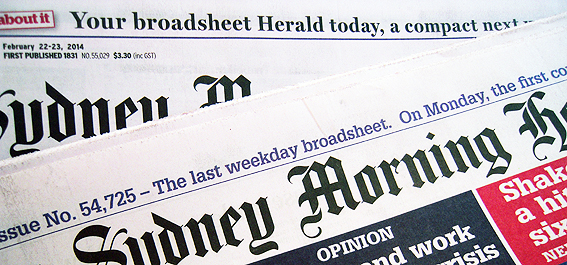
Last week saw the end of the broadsheet format for the weekend edition of the Sydney Morning Herald. From next week, the entire paper will be produced in the compact format (don’t call it a tabloid) which, up until now, has been used only for the sections while the general news section has remained broadsheet. No longer.
The move to a compact version follows on almost exactly a year since the Monday-Friday edition also went fully compact. In the view of many industry insiders, the shift to a compact edition is well overdue. Most broadsheets in the UK went over to smaller versions about 10 years ago. The question is, is it too late for the Herald to follow suit?
If the most recent circulation figures are any guide, then the answer is a resounding ‘Yes’. After an initial spike in interest following the shift to a weekday compact, circulation figures for the Herald and its sister paper, The Age (indeed all major newspapers) have nose-dived. It’s hard to see how getting rid of the Saturday broadsheet section is going to arrest this decline.
Rusted on readers may have a preference for one format or another but it’s not going to make much difference; they’re rusted on. As for attracting new or lost readers, compact papers are supposed to be more user-friendly, making them easier to read on the train or bus. Take a look around though, particularly on peak hour public transport. Passengers are not reading newspapers, compact or otherwise; there’s just not enough room. It’s all phones, with a few tablets and e-readers thrown in for good measure.
Not surprisingly, newspaper publishers now make a lot more noise about their digital reach and less about the actual number of papers printed. The shift to a compact version is less about boosting circulation and more about cutting costs in the hope that, eventually, print sales will level out at a sustainable level – wherever that may be.

